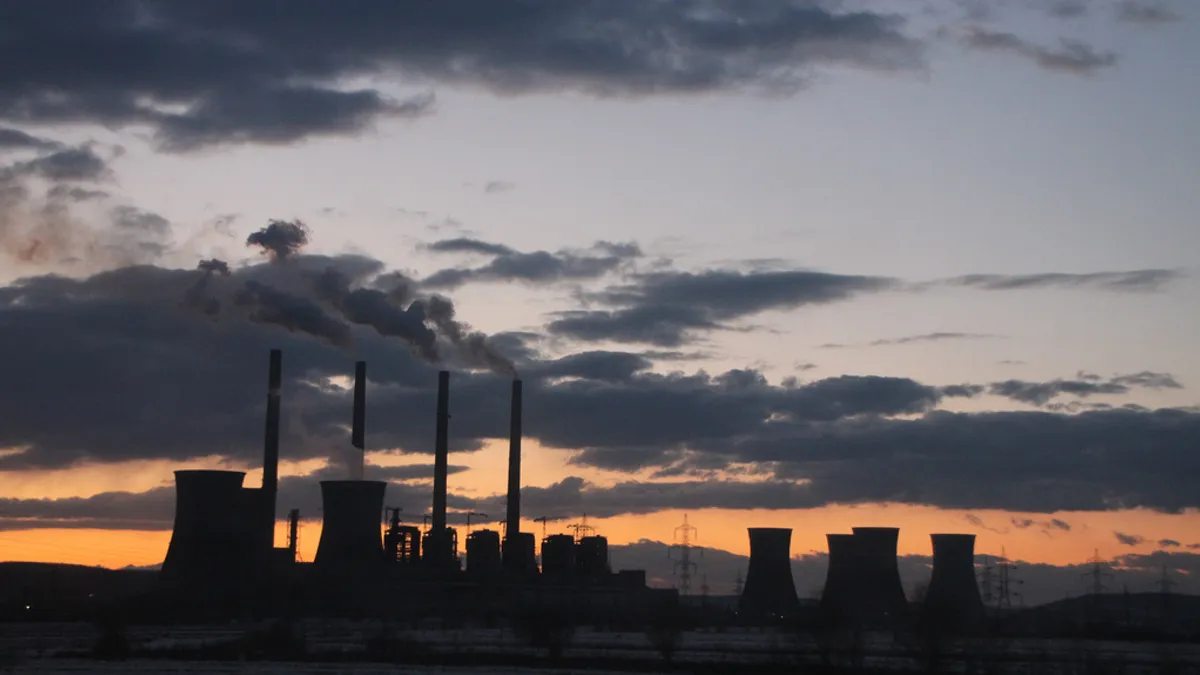The latest quarterly earnings conference calls have wrapped for the power and utilities sector and, of all the calls Utility Dive reviewed, only two companies – Edison International and NRG Energy – appear to be focused on so-called “death spiral” issues.
NRG, by far the largest independent power producer in the country, will own about 53,000 MW when its deal to buy nearly all of Edison Mission Energy's generation closes in a few weeks. So what does the company think about the long-term outlook for conventional generation, which make up the vast majority of its resources? Conventional power faces “contraction,” according to the company. Uh oh.
NRG, however, has a strategy to deal with what it expects to be the demise of its core business. The Princeton, New Jersey-based company intends to increasingly focus on what it views as high growth opportunities like home energy services and off-grid resources.
The 'inexorable' trend toward a decentralized grid
Here's NRG President and CEO David Crane's big picture view of the power industry. There is an “inexorable trend towards a distributed generation-centric, disaggregated future featuring individual choice and the empowerment of the American energy consumer,” Crane said during the February 28 conference call. “That this future is going to occur is, in my opinion, inevitable; that it’s going to occur faster than almost every person thinks it’s going to occur is highly probable.”
Crane expects the evolution to a decentralized system will take a long time. “So at NRG, we are positioning ourselves to succeed during a prolonged period during which the traditional centralized grid-based power system coexists with the fast emerging, high growth distributed sector, much like how fixed line long distance graciously gave way to cellular world dominance only after a couple of decades of relatively peaceful coexistence,” Crane said.
Energy users will rely on the central grid system for backup and supplemental power for years, according to Crane. “As such our ability to serve those customers with our fleet of conventional generation with the power delivered over the traditional wires will remain the backbone of our business for some time to come, even in a world going distributed,” Crane said.
New growth areas
NRG's foundation rests on its IPP business, its retail operations and renewable assets, according to Crane. But looking ahead, NRG sees three main moderate to high growth areas: business self-generation, like combined heat-and power, home energy services and off-grid resources.
Business self-generation
NRG views on-site generation for businesses as a growing market. “In response to the increasing realization in the business community that no serious industry or commercial enterprise can prudently run their business based upon 100% dependence on the traditional grid, we see a growing business-to-business opportunity for our wholesale business in terms of onsite generation for industry and large-scale commercial customers,” Crane said.
Home energy services
But NRG also wants to be a major player in the high-growth home energy services space, according to Crane. “With the pace of technological innovation aimed at the home energy consumer accelerating and the product offering getting so much better, as perhaps best exemplified by the Nest thermostat, having a positive pre-existing relationship with the energy consumer is something we are working on very intently across the retail markets that we presently serve,” Crane said. “We intend to continue to be the market leader in deploying energy innovation inside the home.” NRG has about 2.27 million retail customers, up from 2.21 million a year ago.
Rooftop solar
In the next two to five years, NRG views rooftop solar as the company's biggest opportunity for financial growth, according to Crane. “We are big believers in this view that various analysts, maybe some analysts on the phone, have also come to the conclusion that within the next 12 to 24 months in 24 states, roughly 20 to 24 states, residential solar will be cost competitive, and where we see our advantage is in combining that with actually supply of system power,” Crane said.
NRG intends to offer rooftop solar to its retail customer base. One of its top priorities for this year is to “meaningfully” expand its distributed solar business through partnerships with other companies, Crane said.
'Off-grid' solutions
Finally, NRG is focused on “off-grid” solutions that include a mix of renewables, energy storage and localized automation to balance production and load, according to Crane. “We’re just getting started in this area, but if you read our Necker Island announcement a couple weeks ago, you’ll have a good sense of where we are going,” Crane said.
NRG expects to start “real life” field testing this year a new distributed backup power resource that includes a Stirling engine running on natural gas. The “Beacon 10” device could provide backup power to renewables. “The basic theory of it is that if you have a machine that ties to the natural gas system in the United States, you can link it up with solar on a distributed basis and you don’t need to have a basement full of batteries,” Crane said.
NRG will make a decision about large-scale commercial production in the second half of this year, with production possibly starting a year later, Crane said.
View from the top
NRG has a broad plan for the changing grid landscape. It's a plan that calls on the company to transform to meet various emerging needs of power users. Utilities, are you paying attention?
Finally, we'll leave you with a cheat sheet on NRG's three-part strategy that the company provided during its conference call presentation.





















